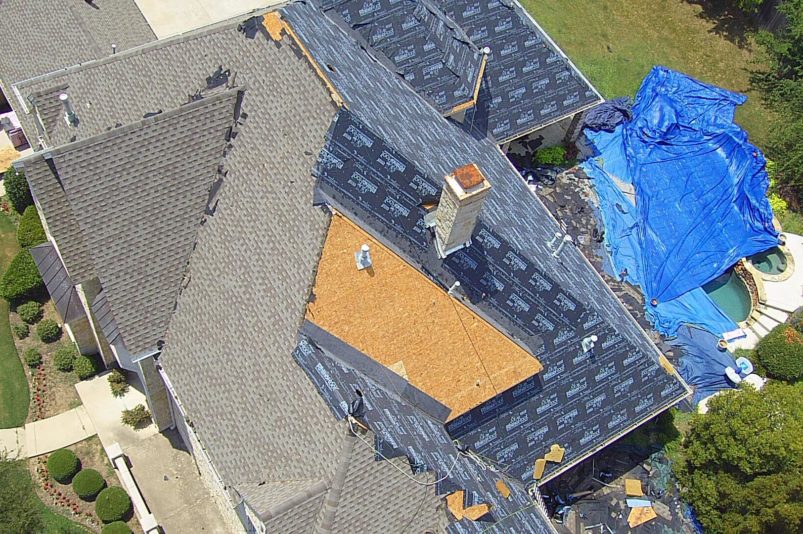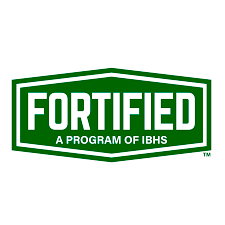
When you think about the bones of a roof, most people picture the rafters or trusses. But there’s another layer that’s just as important, even though it often flies under the radar: roof sheathing. This unsung hero sits right between the structural framing and the outer roofing materials, acting as the foundation for everything above it.
Without it, your shingles, tiles, or metal panels wouldn’t have a sturdy surface to rest on, and your home wouldn’t have the insulation or weatherproofing it needs. In this post, we’re breaking down the most common types of roof sheathing to help you make sense of which material might be right for your next project.
Why Roof Sheathing Matters
Roof sheathing isn’t just a base layer; it’s the backbone of your roof’s stability. It provides:
- Structural Support: By tying the rafters or trusses together, sheathing strengthens the entire roof frame.
- A Secure Base for Roofing Materials: Whether you’re installing asphalt shingles, metal panels, or clay tiles, sheathing is what holds everything in place.
- Weather Protection: It acts as a secondary barrier against rain, wind, and other elements before the waterproofing layer even comes into play.
But here’s the kicker—choosing the wrong type can lead to sagging, warping, or even premature failure of your roof. So, understanding the pros and cons of each material isn’t just a matter of preference—it’s essential for long-term durability.
Common Types of Roof Sheathing
Roof sheathing isn’t a one-size-fits-all deal. Each type has its own strengths, quirks, and best-use cases. Let’s walk through the most popular options and what makes them stand out.
Plywood
It’s made by layering thin sheets of wood veneer in alternating directions, creating a material that’s lightweight, strong, and easy to work with.
Plywood’s consistency makes it a favorite for roofing pros—it won’t give you unpleasant surprises like sagging or uneven surfaces. It works seamlessly with asphalt shingles, tiles, or just about anything you’d want on your roof. However, like a wood deck left out in the rain, it’s not a fan of prolonged moisture exposure. Without proper waterproofing, it can warp or delaminate over time.
Why it’s Popular: Plywood is widely available, durable, and works well for both residential and commercial roofs. Plus, its uniform thickness ensures a smooth surface for shingles or tiles.
Things to Watch For: Moisture can be plywood’s Achilles’ heel. If it’s exposed to water over time, it can warp or delaminate, which is why proper waterproofing is critical.
Oriented Strand Board (OSB)
OSB might not have plywood’s pedigree, but it’s earned its place as the budget-friendly alternative. Made by compressing wood strands with adhesives, it’s engineered to handle the same kind of roofing jobs without breaking the bank.
While it doesn’t have plywood’s classic charm, OSB delivers solid performance for the price. It’s widely used in new construction and has improved over the years, especially with moisture-resistant treatments. That said, you still don’t want it to face the elements unprotected for too long—it’s tough, but not invincible.
Why it’s Popular: OSB shines in residential roofing because it’s affordable without compromising structural integrity. It’s also eco-friendly, as it uses wood scraps that might otherwise go to waste.
Things to Watch For: Like plywood, OSB can struggle with prolonged exposure to moisture. However, advancements in water-resistant coatings have made it more reliable for roofing projects.
Tongue-and-Groove Boards
There’s something satisfying about tongue-and-groove boards. They fit together snugly, forming a rock-solid surface that feels like it could withstand a lifetime of storms. These planks were the standard in older homes, and they’re still a great option for specialty projects.
This sheathing isn’t just functional—it’s beautiful, often left exposed to show off its craftsmanship. But here’s the catch: it’s labor-intensive to install and comes with a higher price tag. Still, if you’re restoring a vintage home or want that timeless look, it’s hard to beat.
Why it’s Popular: This type of sheathing provides a beautiful aesthetic for exposed ceilings and unmatched durability. It’s ideal for specialty homes or restoration projects.
Things to Watch For: Labor-intensive installation and higher costs make this option less common in modern builds, but it’s a fantastic choice for certain architectural styles.
Plank Sheathing
If your home dates back to the early 20th century or before, there’s a good chance it has plank sheathing. This method involves nailing individual wood planks (usually 1×6 or 1×8 boards) directly to the rafters. While it’s not as common today, you’ll still find it in older homes or high-end custom builds.
Why it’s Popular: It’s durable, visually appealing, and perfect for those looking to maintain historical accuracy in a restoration.
Things to Watch For: Plank sheathing requires more time and skill to install, which can drive up labor costs.
Choosing Roof Sheathing
Choosing the right roof sheathing isn’t as simple as picking a material and calling it a day. Your roof’s specific needs—and your home’s unique challenges—should guide the decision. Here are the key considerations:
Climate: Think about what your roof will face year-round. If you’re in a humid or rainy region, materials like plywood may hold up better than OSB, though both need solid waterproofing to thrive.
Roof Design: A steep-pitched roof typically deals with less weight per square foot than a flat or low-pitched roof. If your roof’s design requires handling heavier loads, go for thicker, stronger sheathing.
Budget: Cost always matters, but it’s a balancing act. Plywood often offers superior performance but can strain tight budgets. OSB is a cost-effective alternative that doesn’t sacrifice too much strength.
Building Codes: Local regulations might dictate minimum thickness or even the type of material allowed. Always double-check what’s required to avoid expensive do-overs.
Sheathing is a critical part of your roof’s durability. Choose wisely, and you’ll ensure it performs as intended, saving you money and stress down the road. And if you need help, give us a call!





